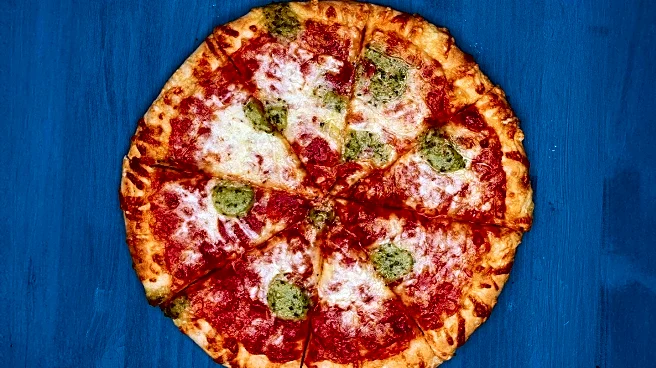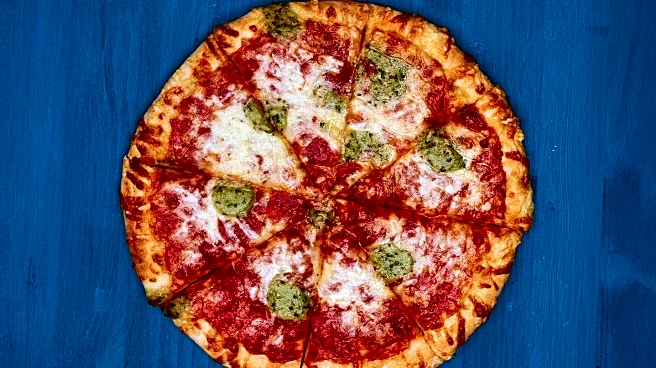What's Happening?
During World War II, American soldiers stationed in Italy were introduced to pizza, a dish that was largely unknown outside Italian immigrant neighborhoods in the U.S. at the time. As soldiers fought through Southern Italy, they encountered locals who
shared their food, including pizza, which was a staple in the region. The soldiers' exposure to Italian cuisine, facilitated by figures like Italian immigrant Hector Boiardi, who supplied canned Italian food to the U.S. Army, led to a post-war demand for Italian food in America. This demand resulted in a significant increase in oregano sales and the development of pizza ovens that made it feasible for restaurants across the country to serve pizza.
Why It's Important?
The introduction of pizza to American soldiers during World War II had a lasting impact on American cuisine. Upon returning home, soldiers' newfound appreciation for Italian food contributed to the rapid expansion of pizzerias across the United States. This culinary shift not only diversified American food culture but also led to the establishment of major pizza chains like Pizza Hut and Domino's. The widespread acceptance and popularity of pizza in America can be traced back to the soldiers' experiences in Italy, highlighting how cultural exchanges during wartime can influence domestic markets and consumer preferences.
What's Next?
The legacy of pizza's introduction to America during World War II continues to influence the food industry. As pizza remains a staple in American diets, the industry may see further innovations in pizza-making technology and variations in recipes to cater to evolving consumer tastes. Additionally, the historical connection between military experiences and culinary trends may inspire further exploration of how other foods introduced during wartime have shaped American cuisine.
Beyond the Headlines
The story of pizza's introduction to America during World War II underscores the broader cultural exchanges that occur during international conflicts. It highlights the role of food as a bridge between cultures and its potential to foster mutual understanding and appreciation. This historical narrative also serves as a reminder of the unexpected ways in which wartime experiences can influence civilian life and cultural practices long after the conflict has ended.














